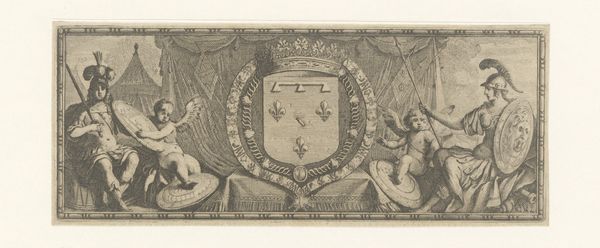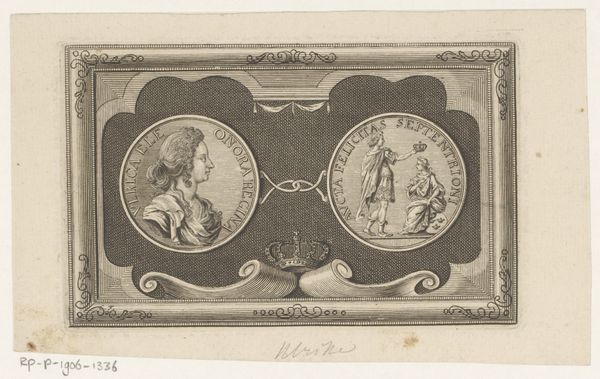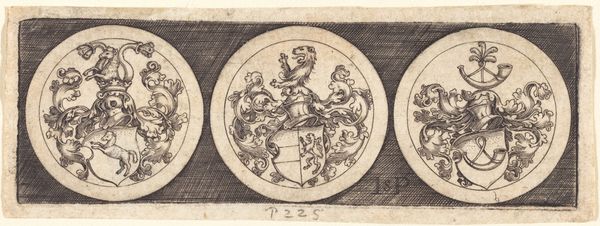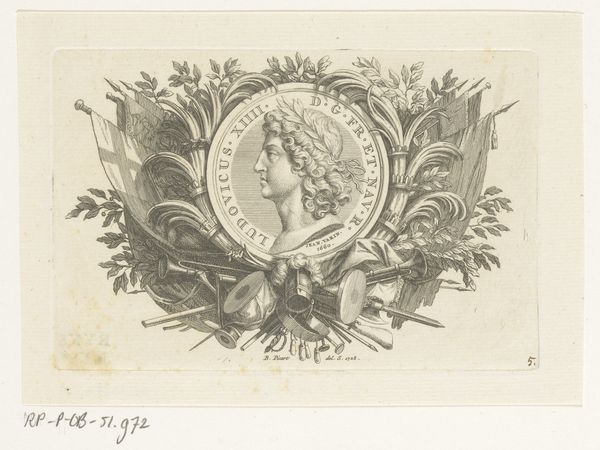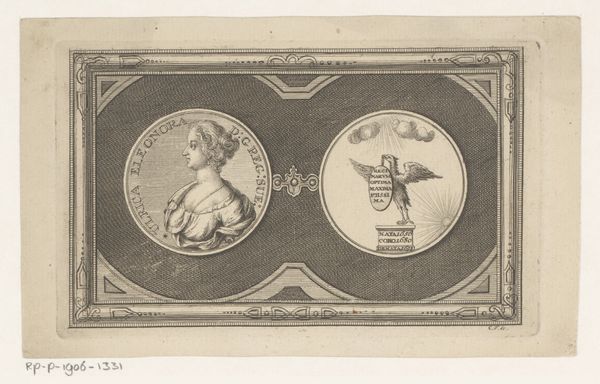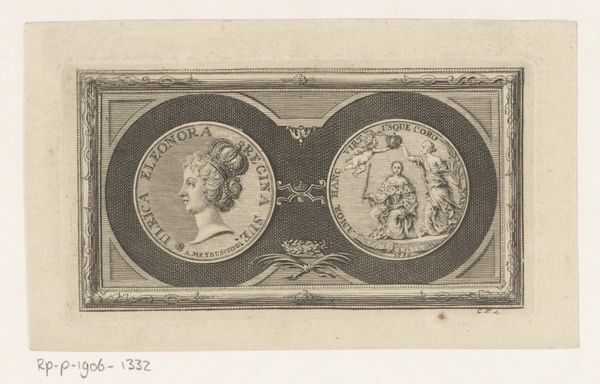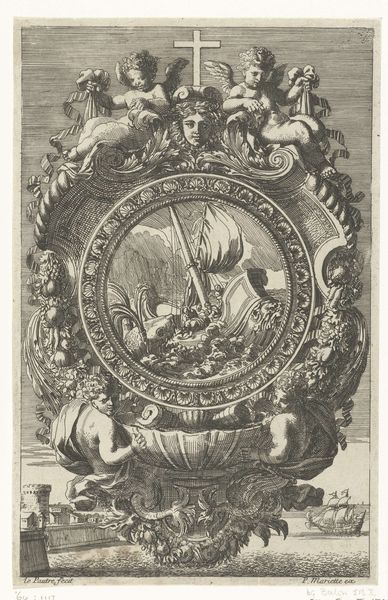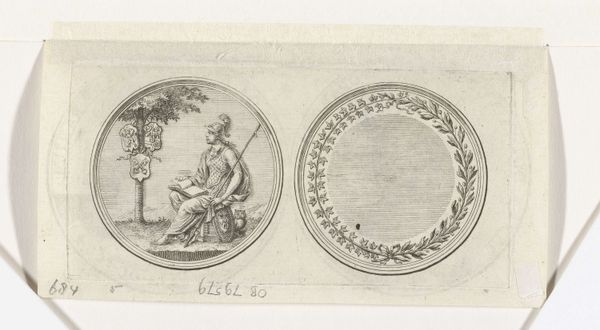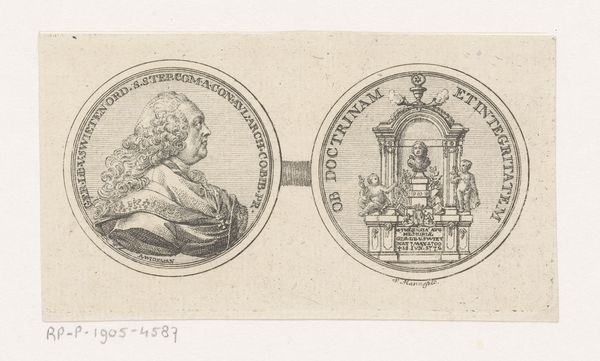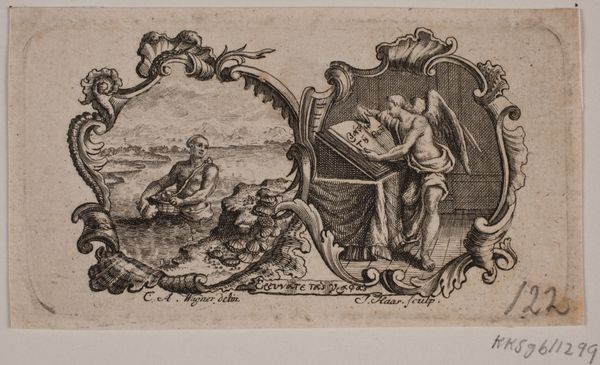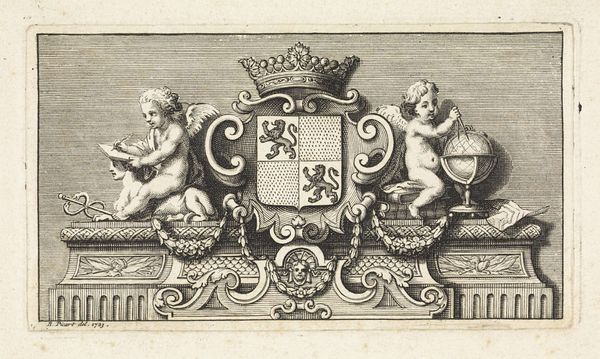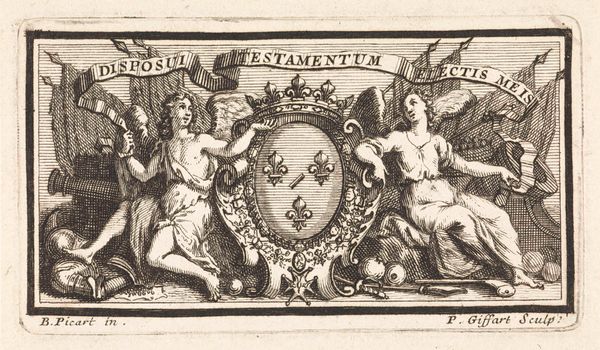
Medal with Portrait of Caligula in the 6th Book, from Tibère ou les six premiers livres es Annales de Tacite Traduits par M. l'abbé de la Bléterie Professeur d'Eloquence au Collège Royal et de l'Académie Royale des Inscriptions et Belles-lettres. A Paris de l'Imprimerie Royale 1768
0:00
0:00
drawing, print, engraving
#
portrait
#
drawing
#
neoclacissism
# print
#
bird
#
figuration
#
geometric
#
men
#
line
#
history-painting
#
academic-art
#
engraving
#
miniature
Dimensions: Sheet: 1 3/4 × 2 11/16 in. (4.4 × 6.8 cm)
Copyright: Public Domain
Editor: This engraving, "Medal with Portrait of Caligula" by Augustin de Saint-Aubin from 1768, strikes me as incredibly detailed despite its miniature scale. What exactly were prints like this meant to *do* at that time? Curator: Good question. This print existed in a world deeply shaped by print culture. Remember, it accompanied a translated edition of Tacitus's Annals. It wasn’t just an illustration; it was part of the project of interpreting and disseminating classical history, helping to visually frame interpretations of Caligula’s reign for a specific reading public. Who would consume this imagery? Editor: Educated elites, surely? The reference to Tacitus would suggest a classically literate audience with the financial resources to buy books. Curator: Precisely. And think about what Neo-classicism was trying to achieve. It was consciously referencing Roman imagery, but why? This isn’t just about aesthetic appreciation; it was about drawing parallels between the Roman Empire and contemporary European powers. How might the imagery of Caligula be used politically? Editor: Perhaps to make commentary on contemporary rulers, implying parallels between their reign and that of a potentially despotic Roman emperor? The imagery on the print seems pointed. Curator: Exactly. Prints like these were tools in shaping public opinion and reinforcing or challenging existing power structures. The very act of publishing, translating, and illustrating Tacitus was a political act, and the imagery contributed significantly to this conversation. These detailed engravings served as more than just illustrations; they were visual arguments embedded within a broader socio-political debate. Editor: It’s amazing to think how much context can be packed into such a tiny image! Now I see this piece of academic art in a new light. Thanks. Curator: The interplay of imagery and text in constructing historical narratives, then and now, continues to fascinate me.
Comments
No comments
Be the first to comment and join the conversation on the ultimate creative platform.

